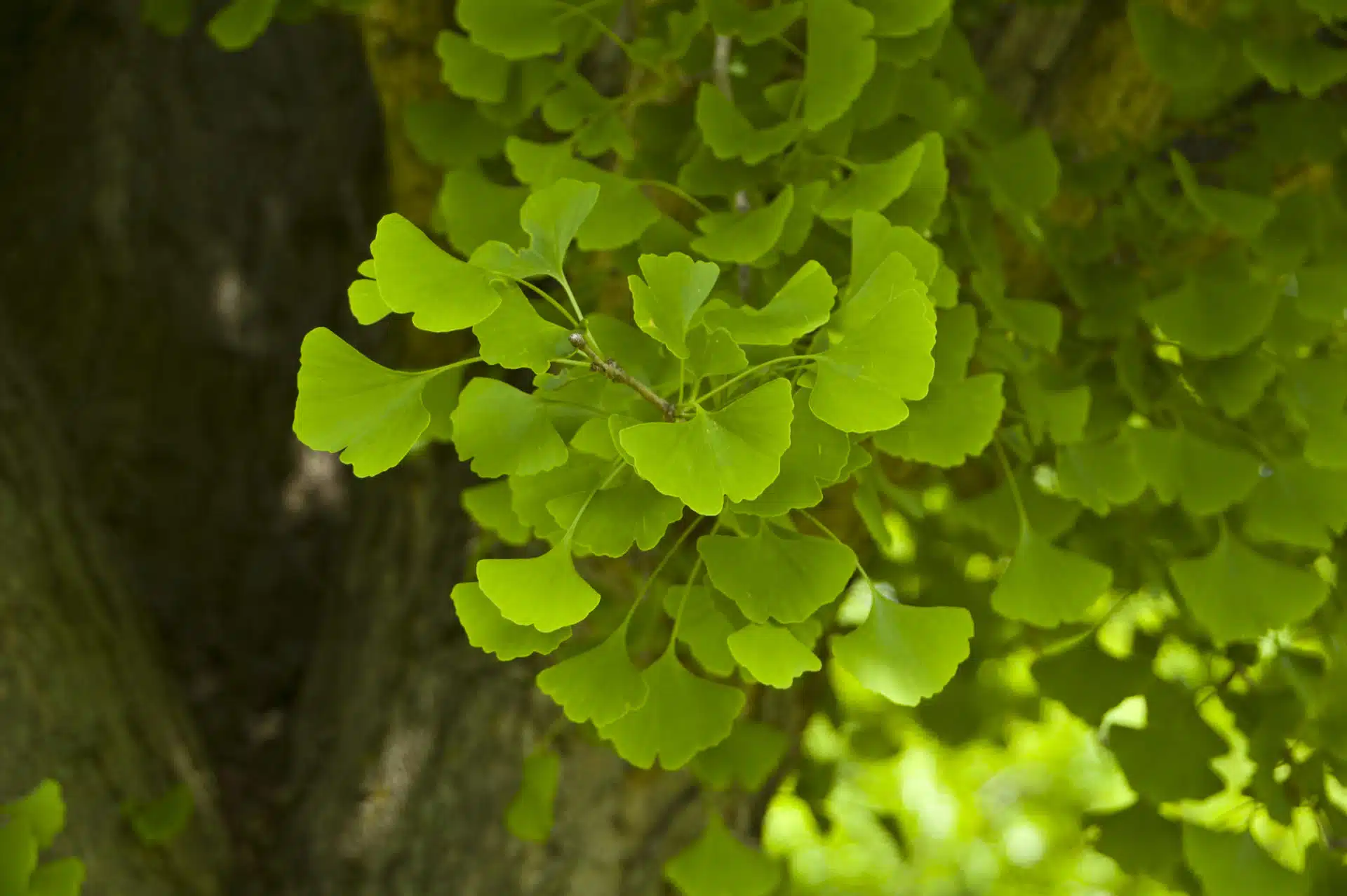Nature Profile
Trees
Ginko Biloba
Ginko Biloba

Ginkgo is a unique tree. It belongs to a group of seed plants that flourished before the evolution of flowering plants. With the exception of humans, the creatures that dispersed the seed of ginkgo are no more. The extinction of the last of their dispersers was an important factor in the dramatic reduction of the natural range of ginkgo, which until about 5 to 15 million years ago, included both North America and Europe. Ginkgos have been in existence for an estimated 200 million years, a majority of the time trees have graced the planet.
The center for genetic diversity for ginkgo is southwestern China where scattered populations may still exist in the wild. The national tree of China, ginkgo has long been cultivated in temple gardens of the Far East where specimens more than a thousand years old have reached heights over 100 feet with impressive trunks 12 to 16 feet in diameter. Ginkgo has also been a preferred subject for Penjing and Bonsai. In the Beijing Botanical Garden where Penjing are on display, there is a thousand year old ginkgo that is only about 10 feet tall.
At The Holden Arboretum the first efforts to cultivate ginkgo came in the 1930s. Seedlings perished after being frost-heaved in the outdoor nursery or died shortly after being planted. A seedling that Lewis Lipp obtained in 1954 was planted in the Nut Tree Collection in 1957 now measures 66 feet tall by 30 feet wide with a diameter at breast height (DBH) of 16 inches. It is a female tree that produces bumper crops in some years, including 2008 when it lost a heavily laden limb in mid- September. In the Display Garden there is a male specimen 33’ x 25’, 13” DBH. It was received as a grafted plant when the garden was being created in November 1979. In the 20 to 30 years before ginkgo trees reach sexual maturity, they are typically sparsely branched.
The growth rate of our trees can vary considerably depending on the soil. In 1995 we received 6” grafts of ‘Magyar’, a male clone. One of these, growing to the east of Sperry Road in the Conifer Collection near the gates to the compost site, in somewhat poorly drained silt-loam is 18’ x 7’, 3.1” DBH. Another in the well-drained sandy-loam on the northwest side of the Specimen Tree Collection of Baldwin Acres measures 27’ x 12’, 5.5” DBH.
The growth habit of Ginkgo cultivars varies from narrow upright to broad spreading, to dwarf, and to weeping. Some cultivars at Holden have displayed different habits than expected. Rootstocks can influence the growth habit of a particular clone and propagators who do not select proper scion wood can also produce trees that do not turn out as advertised. Ginkgo can be propagated from cuttings, but the resulting plants grow considerably slower at first than grafted ones, so most nurseries graft.
A ginkgo seedling planted by Warren H. Corning at Lantern Court sometime in the early 1930s - 40s now measures 61’ x 38’, 22” DBH. The fruit of this and other female trees at Holden start to fall between late October and the second week of November. The outer fleshy seed coat contains acids that are malodorous, smelling of rancid butter. The flesh even contains a compound that can cause contact dermatitis. While female trees can create quite a stink when the fruit has dropped and is rotting, early hard fall frosts tend to mitigate the smell here in Kirtland.
One November, small rodents ate the fleshy part off all the seed that had fallen near the drive at Lantern Court leaving the shell and seed intact, but they have not touched them in other years. Occasionally I have noticed this activity with a limited number of the seed beneath other female ginkgo trees at the arboretum. However, the seed beneath the inner shell has not been consumed. While a delicacy in Asia, the seeds contain poisonous alkaloids. They should be cracked and boiled with a couple changes of water if they are to be consumed, but never during a pregnancy and in very limited quantity for children under age 6.
The beautiful yellow fall foliage of ginkgo is on peak display at Holden between late October and early November, depending on the weather. The fall color is relatively brief, only about a week to 10 days. Most of the leaves often fall in just one day even if it is sunny and calm. Ginkgo has perhaps the most synchronized leaf drop of the 600 species of trees at Holden.
Ginkgo foliage is distinctive and very attractive from the time it emerges in early May. The leaves are fan-shaped and most of the leaves on the long shoots are dissected or notched while the leaves on the more numerous short shoots have only wavy margins. In April 2007 and 2012 the foliage emerged early due to uncommonly warm weather (80s in March) and was destroyed by hard frosts, but leafed out again in May.
One tree I chose for my home landscape in Willoughby is Ginkgo biloba ‘Pete’s Dwarf’, named by Pete Forinash of Girard Nurseries, Geneva, Ohio. Ginkgo has proven to be a very pest and disease resistant, as well as a highly wind-firm and a fairly drought tolerant tree in cultivation. Being just about as adaptable to air pollutants and road salt as other commonly planted street trees, it is a fine choice for our urban or suburban landscapes.




